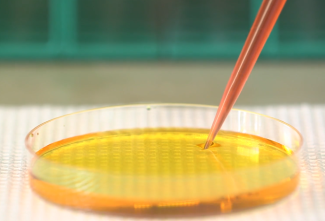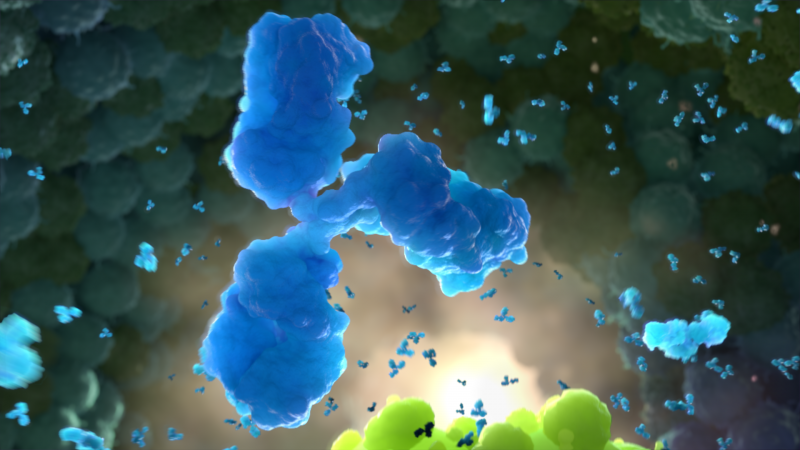Animation Expedition #8 – Viral Attenuation: One Way of Making Vaccines

In the early 1960s, we had no measles vaccine. This meant each year in the U.S., about 500,000 measles infections and 500 deaths were reported. Officials estimate that about 3 to 4 million people were actually sickened by measles each year. By the early 1970s, however, measles rates decreased by more than 95 percent. How was such success possible? In a word – vaccination. The measles vaccine, which was first available in 1963, has virtually eliminated this infection. But all vaccines do not work in the same way. In the case of measles vaccine, scientists used a method called attenuation.
View the animation Attenuation: How Scientists Make Live Vaccines
To “attenuate” means to lessen or reduce the effect of something. When a virus is attenuated, its ability to infect cells is weakened. Measles virus typically infects cells that line the nose and back of the throat. However, to make the vaccine, scientists grew the virus in chick embryo cells. As the virus became better at growing in the chick cells, it was less efficient at growing in human cells. This less efficient, or weakened, measles virus could now be used as a vaccine. Since the immune system still recognizes the virus as “foreign,” it makes an immune response. But the recipient does not get sick. Later, when the real virus comes along, the body is ready to defend itself. Often you never even know you were exposed.
To attenuate a virus, scientists work in a series of steps, using natural selection as a way to weaken the virus. First, they start in the lab with the live virus. They then encourage the virus to infect another type of cell.
If the virus normally infects human cells, most of the viral particles will not be able to infect other types of cells. However, a few viral particles will have mutations that enable them to infect another type of cell, like chick embryo cells. The mutant viruses that can infect the chick embryo cells multiply. A few of them have more mutations. These help the virus get better at infecting the chick embryo cells. Over many generations of the virus multiplying in this new environment, it gets better at infecting the chick embryo cells. At the same time, it becomes less able to infect human cells. The loss of this ability weakens the virus’s effect on human cells. Hence, we say it is attenuated.
Scientists use this method to produce many life-saving vaccines. Maurice Hilleman created vaccines against measles, mumps and rubella this way. Attenuation is also used to make the vaccines for chickenpox, rotavirus, shingles (one version), and polio (oral version). This method is also used to make the nasal influenza vaccine. However, in addition to the virus being attenuated by growth in egg cells, the vaccine virus is also “cold-adapted.” Cold adaptation is another way to alter the virus. As the influenza virus underwent successive rounds of replication in the egg cells, it was also grown in lower and lower temperatures in the lab. The result is a vaccine virus that not only grows less well in human cells, but also grows better in cooler temperatures. The temperatures this vaccine virus grows better in are those typically found in the nose instead of at temperatures found in the rest of the respiratory tract. In this way, the vaccine recipient benefits from the process of viral replication, but the weakened, live virus cannot replicate in the lungs where an infection could lead to complications, such as pneumonia.
Quiz Question:
Sort the steps of making an attenuated vaccine into the correct order, using the list below.
A. Make vaccine from attenuated virus
B. Culture live virus
C. Virus is less able to infect human cells
D. Mutated virus multiplies
E. Infect chicken embryo cells
Answer
- Culture live virus (B)
- Infect chicken embryo cells (E)
- Mutated virus multiplies (D)
- Virus is less able to infect human cells (C)
- Make vaccine from attenuated virus (A)
This is the eighth in a series of postings highlighting our Vaccine Makers Project animations.

